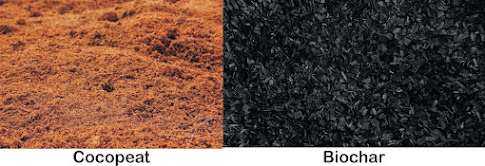It is estimated that around 40% of palm oil plantations in Indonesia are owned by the people, this means that with the current area of palm oil plantations reaching around 15 million hectares, smallholder palm oil plantations reach about 6 million hectares with a total of 16 million smallholders. Of course the amount is not small, so if the palm fruit produced (Fresh Fruit Bunch / FFB) from the plantation can be processed optimally, it will increase the national production of crude palm oil or CPO. The area of 6 million hectares itself is larger than Malaysia's palm oil plantation, which is the second largest producer of palm oil in the world, after Indonesia.
A number of FFB production from smallholder palm oil plantations are often constrained to supply to palm oil mills related to infrastructure and distance. This makes it take a long time or even too late to supply to the nearest palm oil mill, thus reducing the quality of palm fruit / FFB, automatically producing the crude palm oil. Low quality makes FFB prices cheap and even rejected by palm oil mills because they do not meet the required quality standards. This is certainly detrimental to farmers so that efforts are needed to overcome them.
Palm oil mills usually have a capacity of between 30 tons of FFB/hour to 120 tons of FFB/hour or it can be said that the average capacity is 60 tons of FFB/hour. The palm oil mill is owned by a palm oil company and with this capacity is very large for smallholders with limited palm oil plantation area. A mini palm oil mill with a capacity of 1 - 4 tons of FFB/hour is likely to be suitable for these smallholders. With this capacity, besides being cheaper, it requires narrower land and simpler production techniques so that FFB production from remote locations can be processed easily.
The palm oil production process can also be simplified or simplified so that it can be safe and easy to operate, for example in a large factory that uses high pressure steam, it can be simplified to only use low pressure steam. In large factories, high pressure steam is used to drive a steam turbine which is connected to a generator so as to generate electricity for the palm oil mill operation itself and the steam output from a low-pressure steam turbine is used for FFB sterilization. Meanwhile, if the mini mill has low pressure steam or only atmospheric steam, the steam is directly used for FFB sterilization, while the electricity for the operation of the mini palm oil mill comes from outside (external). With this mini capacity, the need for electricity for these operations is also not big.
The high quality of the palm oil produced can be obtained due to the quality of the raw materials and processes carried out. Good equipment performance also makes the process carried out according to the desired operating conditions. With the capacity of small palm oil mills, the volume of products produced is also small, so to achieve large volumes, it must be collected from a number of these mini palm oil mills. With more and more mini palm oil mills scattered in various locations, less FFB is wasted and quality palm oil products can be maintained. Cheap or falling FFB prices at the farmer level can also be overcome by mini palm oil mills that have good market access for their palm oil products.










